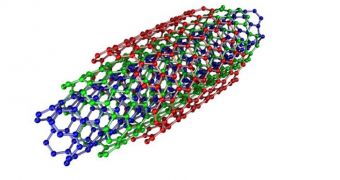In order to develop an excellent way of searching for carbon nanotubes, investigators at the Lehigh University are using both a total internal reflection fluorescence microscope (TIRFM) and an atomic-force microscope (AFM) to find these structures in a wide variety of materials.
This is made difficult by the fact that CNT usually measure between 1 and 5 nanometers in diameter. This makes them thousands of times thinner than a human hair. The nanostructures can easily be concealed by the tiniest specs of dust inside the microscopes.
“Our overall goal is to find and examine CNT and characterize their properties so that engineers can find applications for them. We don’t have images of CNTs yet, but we have produced images of polyethylene beads with dyes that emit light at various wavelengths,” Tom Flores explains.
“So we know our system is working,” adds Flores, an undergraduate student who participated in this research under a LU Physics Department Research Experience for Undergraduates program grant.

 14 DAY TRIAL //
14 DAY TRIAL //